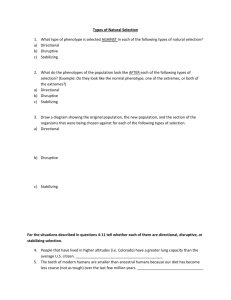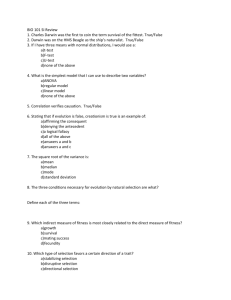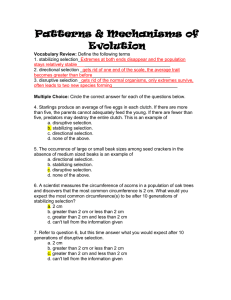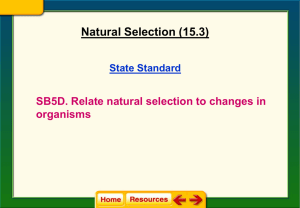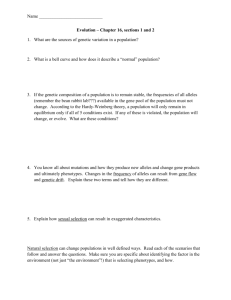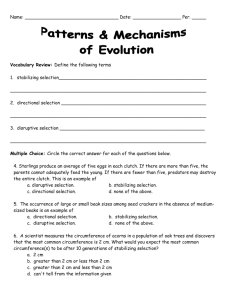Types of Selection Webquest
advertisement
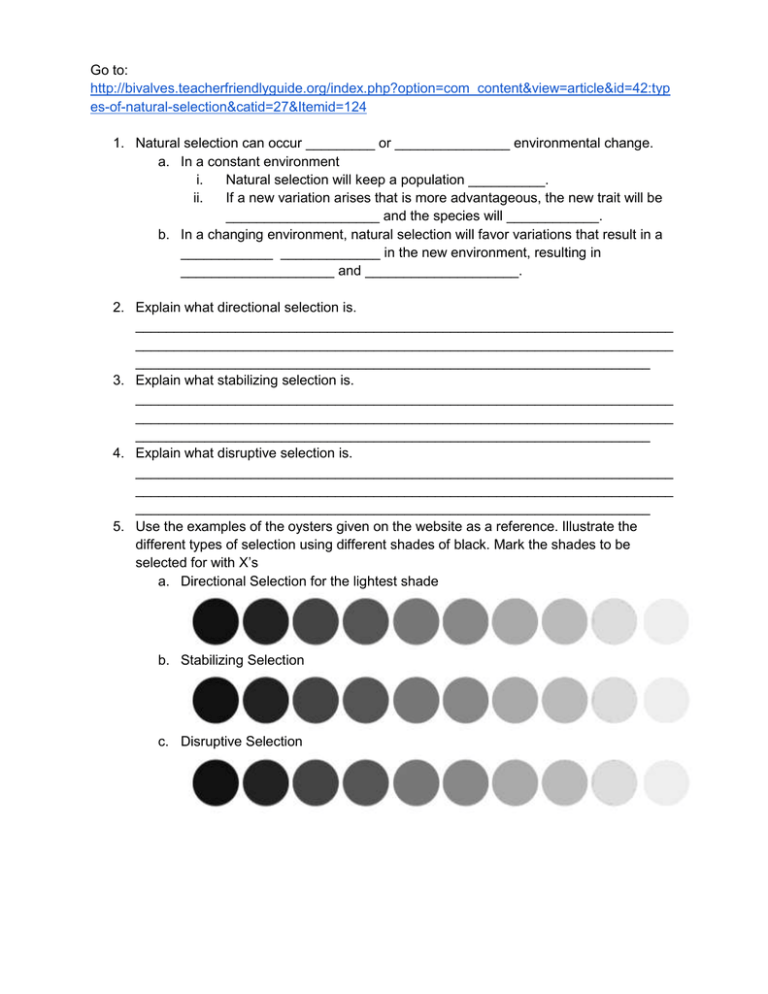
Go to: http://bivalves.teacherfriendlyguide.org/index.php?option=com_content&view=article&id=42:typ es-of-natural-selection&catid=27&Itemid=124 1. Natural selection can occur _________ or _______________ environmental change. a. In a constant environment i. Natural selection will keep a population __________. ii. If a new variation arises that is more advantageous, the new trait will be ____________________ and the species will ____________. b. In a changing environment, natural selection will favor variations that result in a ____________ _____________ in the new environment, resulting in ____________________ and ____________________. 2. Explain what directional selection is. ______________________________________________________________________ ______________________________________________________________________ ___________________________________________________________________ 3. Explain what stabilizing selection is. ______________________________________________________________________ ______________________________________________________________________ ___________________________________________________________________ 4. Explain what disruptive selection is. ______________________________________________________________________ ______________________________________________________________________ ___________________________________________________________________ 5. Use the examples of the oysters given on the website as a reference. Illustrate the different types of selection using different shades of black. Mark the shades to be selected for with X’s a. Directional Selection for the lightest shade b. Stabilizing Selection c. Disruptive Selection Go to: https://www.boundless.com/biology/textbooks/boundless-biology-textbook/the-evolutionof-populations-19/adaptive-evolution-132/stabilizing-directional-and-diversifying-selection-53511742/ 1. Draw the graph for each of the following types of selection Stabilizing Selection Directional Selection Disruptive (or Diversifying) Selection Go to: http://evolution.about.com/od/NaturalSelection/tp/Types-Of-Natural-Selection.htm 1. The beak length of the finches that Darwin observed in the Galapagos Islands changed over time due to food availability. When there was a lack of insects, birds with thicker beaks survived because they were able to crack open seeds. When insects were plentiful, birds with smaller, longer beaks were favored. This is an example of ____________________ selection. 2. Infants with an average birth weight are more likely to survive than infants that are smaller or larger than average. The bell curve on the graph peaks at a birth weight that has the minimum death rate. This is an example of ____________________ selection. 3. Hunters tend to kill the bigger individuals of a population. As a result, the population skews toward the smaller individuals. This is an example of ____________________ selection. 4. Dark-colored peppered moths are seen more in industrialized regions. Lightcolored peppered moths are seen more in rural regions. Few medium-colored moths are seen in either region. This would be an example of ____________________ selection. 5. Most human skin color does not tend to be extremely dark or extremely light. The majority falls somewhere in the middle of these two extremes. This would be an example of ____________________ selection.
